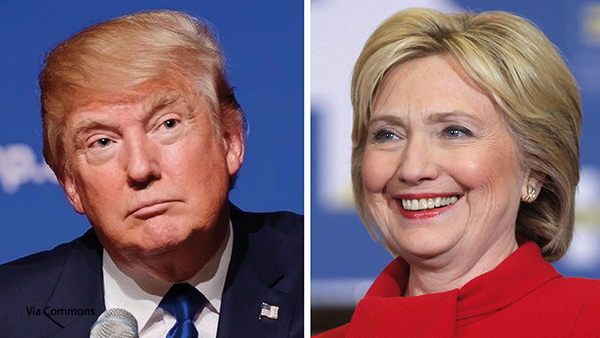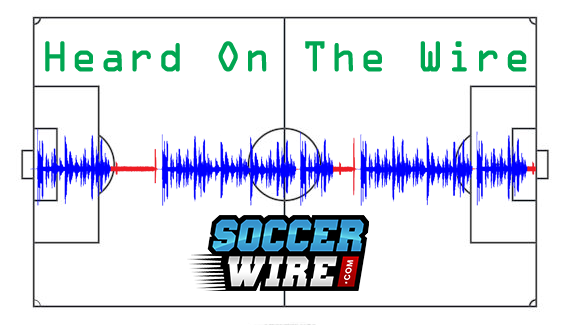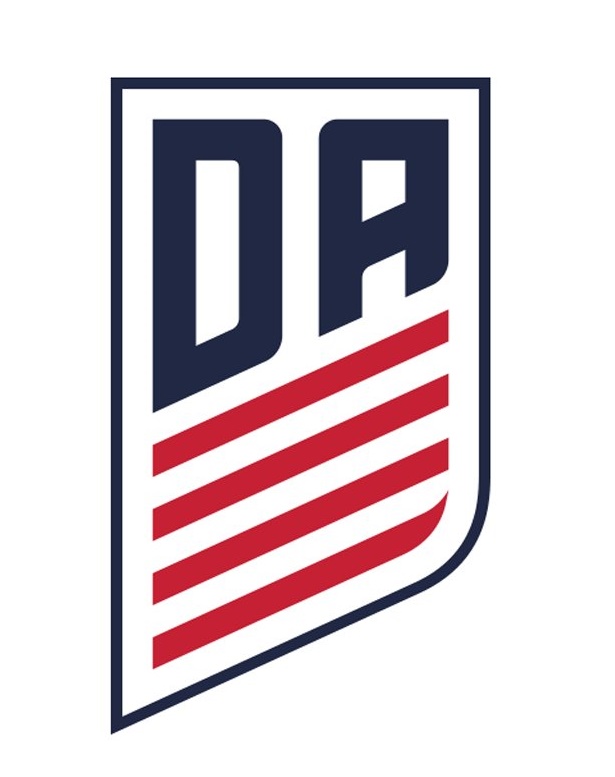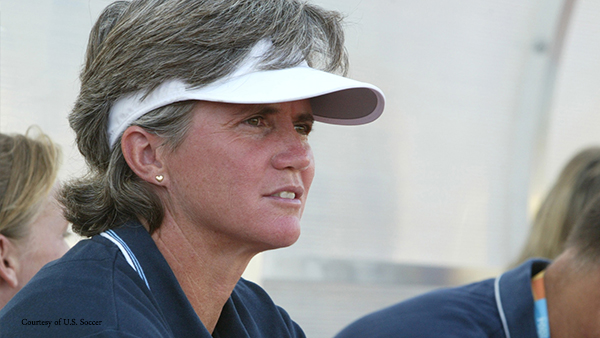Election blues: The youth soccer war drawing parallels to Trump-Clinton

 Are you tired of the 2016 U.S. Presidential election?
Are you tired of the 2016 U.S. Presidential election?
I’m not asking you who you’re voting for – or more likely, who you hate so much as to feel compelled to vote for the other one. I’m asking you how the whole thing makes you feel.
The answer for millions upon millions of us, of course, is a queasy mix of anger, shock, cynicism, gallows humor…and finally and above all, a deep exhaustion. A fatigue both mental and spiritual that won’t relent until November 9, and might even stick around for the next four to eight years if we’re (un)lucky.
So imagine my surprise (and dismay) to hear more than one veteran youth soccer insider use the Hillary Clinton vs. Donald Trump race as a comparison for our sport’s latest internecine squabble: the rise of U.S. Soccer’s new Girls Development Academy (set to debut next fall) as an alternative to/competitor with/destroyer of the established Elite Clubs National League.
“I mean, it’s like, do I have to choose between these two?” mused one well-connected soccer executive in a recent conversation. “I don’t trust either of them.”
Said another: “Who benefits? We all lose. We don’t get someone looking out for our best interests. We get someone looking to further their agenda.”
Someday, maybe enough people in high places will come clean – or dish enough dirt in quiet conversations – for someone to tell the definitive story of the U.S. Soccer-ECNL fallout. (If you’re one of those people and you’re reading this, by all means, call me, send me an email, DM me, whatever. All confidentiality will be honored.)
In the meantime, all I’ve got for now is a series of snapshots from various perspectives around the situation, like a camera flash illuminating lurid, fleeting glimpses of a pitched brawl in a blacked-out barroom.
 The federation publicly mused about starting its own national youth league back in January 2015. And for the ensuing year or so, ECNL leaders seemed to sincerely believe that such a concept might include or even be anchored on the organization they’d built from the ground up. When the reality set in last spring that the fed planned to directly compete with ECNL for the best clubs, teams and players in the country, it set off a quiet battle that seems to be gathering momentum, and spite, by the day.
The federation publicly mused about starting its own national youth league back in January 2015. And for the ensuing year or so, ECNL leaders seemed to sincerely believe that such a concept might include or even be anchored on the organization they’d built from the ground up. When the reality set in last spring that the fed planned to directly compete with ECNL for the best clubs, teams and players in the country, it set off a quiet battle that seems to be gathering momentum, and spite, by the day.
When it went public with its plans for the GDA, U.S. Soccer had major advantages, namely wealth, resources, existing Boys DA infrastructure and of course, the be-all-end-all power and leverage granted to all national federations by FIFA’s organizational structuring of the game. But it lacked actual member clubs in its new league, and it would have to scurry to win over a critical mass of the nation’s top youth clubs.
+READ: NCAA coaches take wait-and-see attitude on Girls Development Academy
If the Girls DA was anything less than a fully national competition with balanced geographical composition and respected member clubs, it risked losing the battle before it had even begun. Clubs need economies of scale and manageable logistics for local and regional competition among member teams, to say nothing of actually having the best talent on the field and on the coaches’ benches, as promised.
ECNL’s weaknesses are different. It boasts plenty of talent, but lacks the fed’s financial heft and thus must rely heavily (though not entirely) on pay-to-play at the club level, which skews relationships between players, parents, clubs and coaches and all the messy complications that ensue from there.
 The recruitment for Girls DA member clubs in late spring is where things seem to have gotten really messy. What USSF phrased as the opening of the “application process” – this week women’s technical director April Heinrichs told SoccerAmerica the fed “evaluated more than 200 applications and narrowed it down to 74” – apparently became, in reality, as much a matter of the federation wooing top clubs as vice versa.
The recruitment for Girls DA member clubs in late spring is where things seem to have gotten really messy. What USSF phrased as the opening of the “application process” – this week women’s technical director April Heinrichs told SoccerAmerica the fed “evaluated more than 200 applications and narrowed it down to 74” – apparently became, in reality, as much a matter of the federation wooing top clubs as vice versa.
The easiest sell was to big-time players outside ECNL, starting with the fledgling academy structures of MLS or NWSL pro clubs who hadn’t yet grown to the point of ECNL entry. But that was never going to be enough. USSF would have to lure away core ECNL members, or at the very least convince them to divert their top players in each age group to new teams to compete in the Girls DA.
The federation needed to convince enough big clubs over a substantial enough geographic range to join, in order to calm the nerves of the rest of the scene and convince everyone that this new entity was indeed an unstoppable train that everyone needed to hop on.
Thus we saw USSF announce its list of participants in batches: The first 25 members were named on July 30, then 28 more were revealed about two weeks later. Then on Aug. 17 the fed announced a list of the “final 22 clubs” for the inaugural season of the Girls DA, taking overall membership to 74 clubs, nearly as many as the ECNL and Boys DA.
+READ: Final 22 clubs announced for first Girls’ Development Academy season
But they weren’t actually the final 22 clubs – the Carolina Railhawks, LA Galaxy (a full-funded program, no less) and San Jose Earthquakes were subsequently announced as participants, and we’re likely to see at least a few further additions between now and August, when the Girls DA gets underway in earnest. Notably, however, last month New Jersey-based heavy hitters Match Fit Academy made a point of publicly declining what they termed an “invite” to join the Girls DA and reaffirming their commitment to ECNL instead.
It seems certain that both leagues have been doing plenty of backchannel wheeling and dealing, working furiously to court clubs to come to, or remain on, their side.
 “It’s been some Game of Thrones-type sh**,” another well-placed source told me, speaking in awestruck tones of the behind-the-scenes maneuvering over the summer.
“It’s been some Game of Thrones-type sh**,” another well-placed source told me, speaking in awestruck tones of the behind-the-scenes maneuvering over the summer.
The general consensus is that the Girls DA “won” this round of cold warfare, by reaching and exceeding a minimum tipping point in size and spread. But if there was any shadow of a doubt that the federation was approaching it as a political process, Heinrichs removed it this week by revealing that GDA players apparently will be allowed to play high-school soccer after all, provided they step away from their club teams during that season.
“We know from the Boys Development Academy, that over time girls will gravitate toward the Girls Development Academy, whether it’s in one year or three years,” she told SA’s Mike Woitalla. “Girls can play high school soccer. They just can’t do both at the same time.”
+READ: About face? Heinrichs says Girls DA will allow high-school play
Translation: The Girls DA doesn’t like high-school soccer, but also doesn’t want to let ECNL use the “no-high-school rule” against it in the competition for clubs and players. A cynic might predict that it will unfold like the early years of the boys DA, where high-school participation was allowed at first, only to be banned once the USSF had gained leverage as the best competition in the nation.
Which brings us back to a nagging question: Is the boys DA really working well enough to justify being the model for the fed’s brand-new girls league?
 “It’s a race to the middle,” one veteran coach told me. “The boys DA took coaches in the Wild West and moved them to the less-Wild West. Are we producing more players because of the DA? Do fewer players get overlooked?
“It’s a race to the middle,” one veteran coach told me. “The boys DA took coaches in the Wild West and moved them to the less-Wild West. Are we producing more players because of the DA? Do fewer players get overlooked?
“I see marginal gains by the DA and it’s not an absolute.”
At this point no one has any doubts of the fed’s commitment to the Girls DA. The question is what their product will look like in practice, both on the field and in terms of management.
In the meantime, the politicking has been so overt, so calculating that no one has any claim to any moral high ground – if they ever did in the first place. Clubs and their leaders are making the decisions that they feel will best allow them to at least survive, and hopefully thrive, amid these tectonic rumblings.
But they don’t trust either side, and there’s certainly not much inspiration or excitement to be had.
SOCCERWIRE MARKETPLACE
- visitRaleigh.com Showcase Series 2025, hosted by NCFC Youth
- OFFICIAL MANCHESTER CITY SOCCER CAMPS
- Wanted Licensed Youth Soccer Coach
- Join Official Elite Summer Soccer Camps with Europe’s Top Pro Clubs!
- The St. James FC Travel Staff Coach - North (Loudoun) & South (Fairfax)
- The St. James FC Girls Academy (GA) Head Coach - 2 teams
- The St James FC Boys Travel Tryouts
- OFFICIAL BAYERN MUNICH SUMMER CAMPS U.S.
- JOIN THE ALLIANCE!
- OFFICIAL FC BARCELONA CAMPS U.S.

